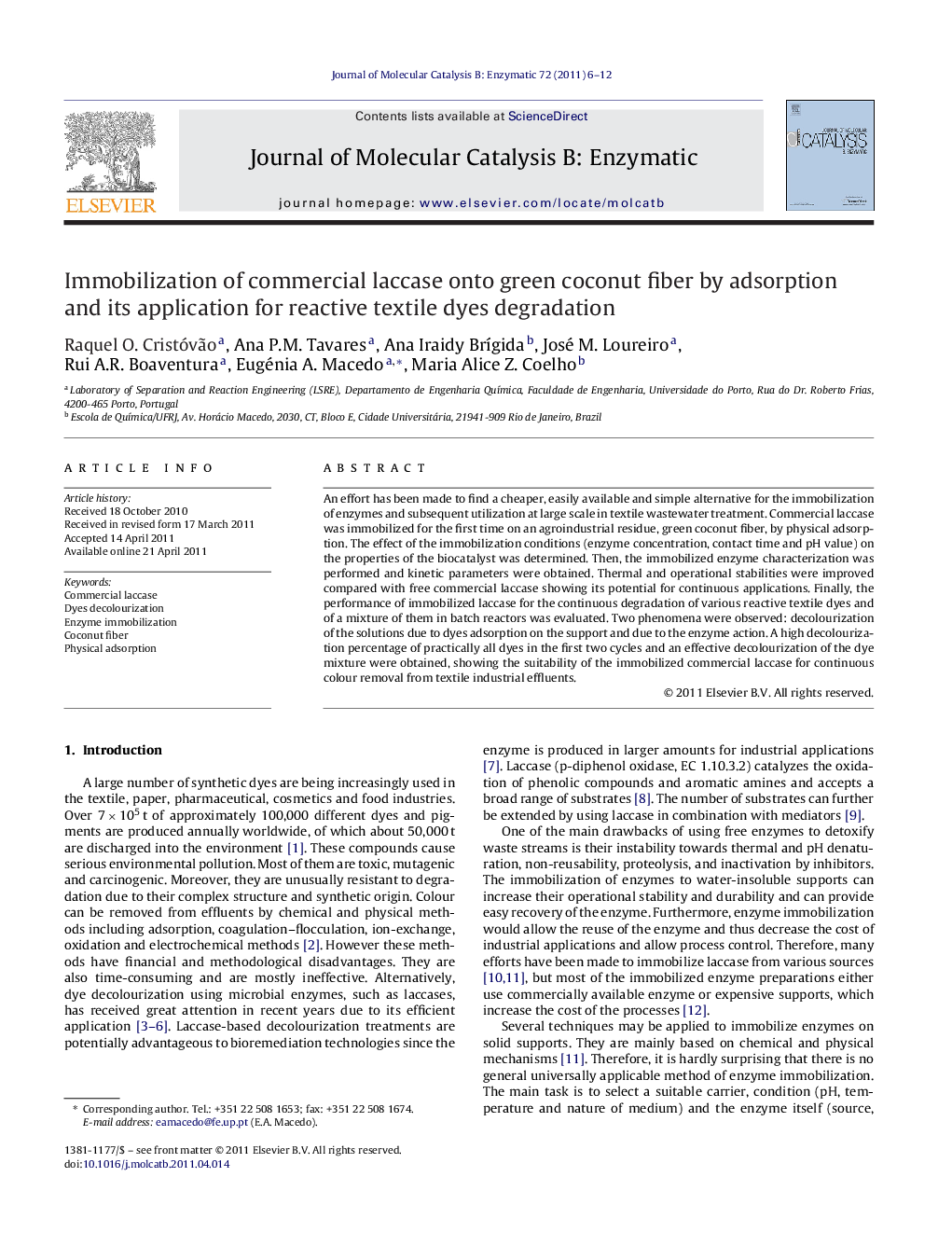| Article ID | Journal | Published Year | Pages | File Type |
|---|---|---|---|---|
| 70229 | Journal of Molecular Catalysis B: Enzymatic | 2011 | 7 Pages |
An effort has been made to find a cheaper, easily available and simple alternative for the immobilization of enzymes and subsequent utilization at large scale in textile wastewater treatment. Commercial laccase was immobilized for the first time on an agroindustrial residue, green coconut fiber, by physical adsorption. The effect of the immobilization conditions (enzyme concentration, contact time and pH value) on the properties of the biocatalyst was determined. Then, the immobilized enzyme characterization was performed and kinetic parameters were obtained. Thermal and operational stabilities were improved compared with free commercial laccase showing its potential for continuous applications. Finally, the performance of immobilized laccase for the continuous degradation of various reactive textile dyes and of a mixture of them in batch reactors was evaluated. Two phenomena were observed: decolourization of the solutions due to dyes adsorption on the support and due to the enzyme action. A high decolourization percentage of practically all dyes in the first two cycles and an effective decolourization of the dye mixture were obtained, showing the suitability of the immobilized commercial laccase for continuous colour removal from textile industrial effluents.
Graphical abstractFigure optionsDownload full-size imageDownload as PowerPoint slideHighlights► Coconut fiber was successfully used to immobilize commercial laccase by adsorption. ► The immobilization improved the operational and thermal stabilities of free enzyme. ► A high decolourization of practically all reactive textile dyes studied was obtained.
